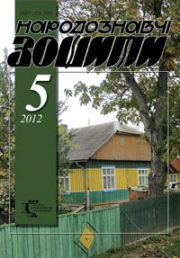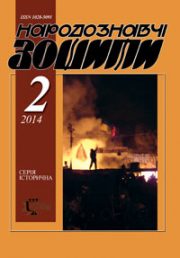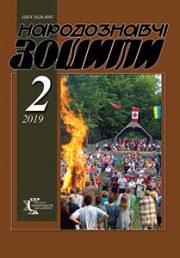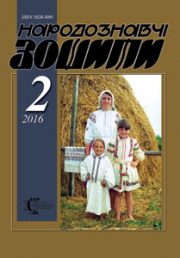The Ethnology Notebooks. 2018, 2 (140), 305—309.
UDK 745/749.031.4.05:39(=161.2)]”1990/2020”
DOI https://doi.org/10.15407/nz2018.02.305
Received 25.01.2018
ORCID ID: https://orcid.org/0000-0002-5931-3816
Herus Liudmyla, Ph.D in Art Studies,
Senior Researcher fellow,
Head of the Department of Folk Art
Folk Art Department
at the Institute of Ethnology
of the National Academy of Sciences of Ukraine.
Svobody Avenue 15, 79000, Lviv, Ukraine.
Contacts: Tel. (067) 137-9791; e-mail: ludmilagerus@gmail.com
Abstrakt. In the paper due to the tendencies of Ukrainian culture, in particular, the 1990–2020`s decorative art the relevance, aim, tasks and expected result of the project «Ukrainian Decorative Art 1990 – 2020`s: ethnic meanings of the Creative Practices» are indicated. This project is carried out by the Folk Art Department of the Institute Ethnology of NAS of Ukraine.
Keywords: culture,decorative art, ethnic design, ethnicity, tradition, creative practice.
REFERENCES
Zhulyns’kyj, M. (2002) Dukhovna spraha po vtrachenij Bat’kivschyni. Kyiv: KM Akademiia [in Ukrainian].
Lehen’kyj, Yu.H. (2000) Dyzajn: kul’turolohiia ta estetyka. Kyiv: KDUTD [in Ukrainian].
Pavliuk, S.P. (2008) Slovnyk osnovnykh poniat’ i terminiv z teorii etnolohii. L’viv: Instytut narodoznavstva NAN Ukrainy [in Ukrainian].
Stankevych, M. (2012) Protodyzajn, kontseptsii i morfolohiia dyzajnu. Narysy z istorii ukrains’koho dyzajnu KhKh stolittia: Zbirnyk statej. Kyiv: Feniks [in Ukrainian].
Tymkiv B.M. (2011) Rol’ etnodyzajnu u pidhotovtsi khudozhnykiv dekoratyv-no-prykladnoho mystetstva. Naukovi zapysky Tern. nats. ped. u-tu im. V. Hnatiuka, 3, 44—49 [in Ukrainian].
Suchasni majstry kosivs’koi keramiky. Retrieved from: http://lib.knukim.edu.ua/proekti-biblioteki/proekt-skarbi-nacii/kosivska-malovana-keramika/suchasni-maystri-kosivskoi-keramiki/.
Tamara TKACh. Lehendarnyj volyns’kyj serpanok u Luts’ku. Retrieved from: http://volyntimes.com.ua/news/1006/.







